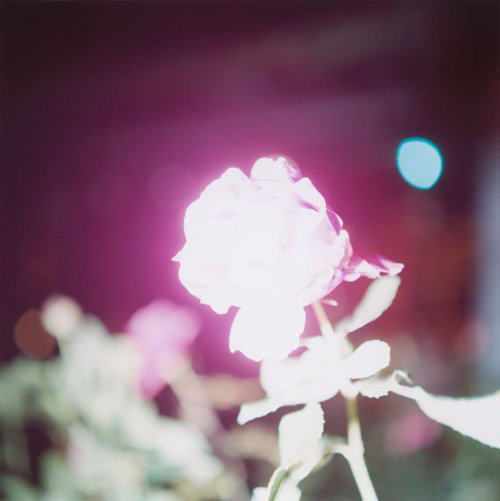
“Untitled” (2009) from the series “Illuminance”. Courtesy of the artist © Rinko Kawauchi
Rinko Kawauchi (b. Shiga, Japan, 1972) was one of 25 artists showing at Le Mois de la Photo in Montreal in September 2011, this year themed around Lucidity – Inward Views. Kawauchi is renowned for the glowing translucence of her photography, often taken in soft focus and subtly tinted colours to draw us in a state of waking dream.
From a corner of the vast opening reception, Kawauchi stood aloof with her tripod and camera, documenting curious and mesmerised audiences as they were feasting on her first exhibition in Montréal. Guest curator Anne-Marie Ninacs temporarily partitioned the “Arsenalâ€, Le Mois de la Photo’s main venue, to provide a separate room for each of the eight artists showing in its grand hall. Ninacs designed every artist space differently, and for Kawauchi she fashioned a small cornering area so people could experience her work more intimately. “It is just about the size of my darkroom†explained the Japanese photographer, on how she found it comfortable and familiar.
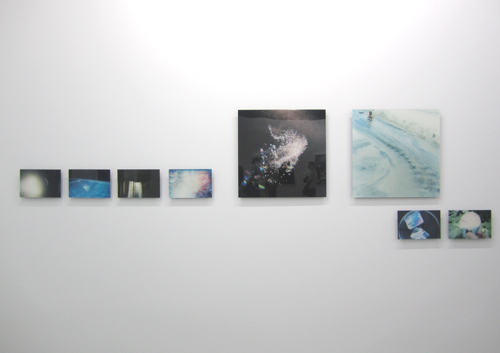
Exhibition view at Le Mois de la Photo 2011. Courtesy of the artist and Le Mois de la Photo. Photo: M-KOS
Kawauchi evenly arranged ten large square pictures in this room, all similarly sized, all hung at the same height. Around this regular photographic pattern she sprinkles many more images, of smaller and more varied dimensions, disparately positioned to multiply the dynamics of her space. Within these rhythmical displays, she also included a video piece so movement and stillness collide to generate even more complexity.
All these works originate from Kawauchi’s “Illuminance†series, recently published in a book assembling 150 works produced in the last 15 years (published by Aperture in NY). None of the works chosen here were published before, for this specific collection of photos capturing different light and shadows effects on mundane objects and events. “The date of the photograph is not important†announces Kawauchi. “Each photo is devoid of description, all are ‘Untitled’ â€. For her, even the word “Untitled†becomes unnecessary. By not giving away anymore information than the visual image, her work simply float in a “constant present†– She goes further to suggest that even memories recalled from the past, or aspiring projections of the future are all experienced in this “constant presentâ€*.
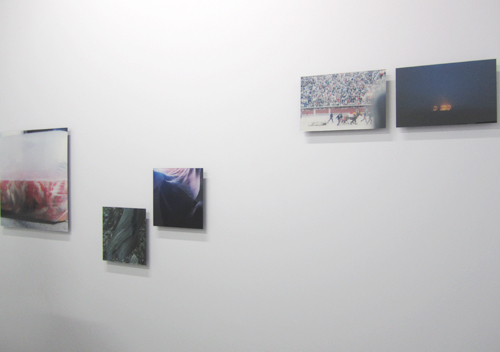
Exhibition view at Le Mois de la Photo 2011. Courtesy of the artist and Le Mois de la Photo. Photo: M-KOS
“Most of the time I don’t take photos with a theme in mind. I trust my experience and technique enough to know I’ll be able to capture the pictures I want. And the ones that give me the most pleasure, the most excitement are those I take spontaneously or intuitivelyâ€. Likewise, the video she juxtaposed here with her photography doesn’t have a particular narrative. “Although they provide a different experience of time and space, I make videos in the same approach as with my photography. I made a hole in the wall and put the monitor behind it, so that moving and still images can be viewed on the same level, immersing one another.â€
Illuminance constitutes a 12th publication since her first trilogy release in 2001 (Utatane, Hanabi and Hanako). For Kawauchi, books are not just catalogues but works of art in their own right. “I love books. Books give you a very personal experience. You can have a very intimate relationship with books. Since I was in high school, I simply wanted to make my own book. The content wasn’t so important.†She also explains a practical concern with: “for a long time, no art gallery in Japan wanted to show photography, so books became the dwelling for photographers to exhibit their work. I still carry on this tradition.â€
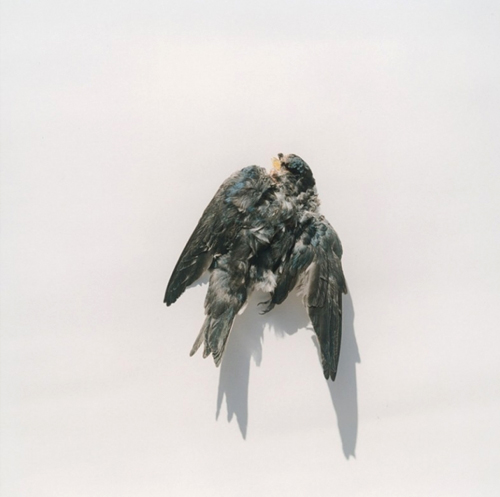
“Untitled” (2011) from the series “Illuminance”. Courtesy of the artist © Rinko Kawauchi
When asked to reply to Henri Cartier-Bresson’s quote “Once the picture is in the box [camera], I’m not all that interested in what happens next. Hunters, after all, aren’t cooksâ€, Kawauchi’s opinion stands on a different ground than the French photographer, and contrasts by claiming both roles. Continuing on this metaphor, Kawauchi shoots her ingredients [replace “images†here] but also carefully selects which to take to the kitchen and simmer into a meal [replace “a book†or “an exhibition†here]. She admits the process is painstakingly long but concludes: “I’m not satisfied until I’ve completely prepared and served it. I need to take care of my pictures from the beginning until the end. Maybe this comes from a maternal instinctâ€.
On her recurrence of choosing a square picture format, Kawauchi argues: “I have been using Rolleiflex cameras for a long time. These only take square photos. I feel very comfortable working with this camera. Squares don’t commit to either horizontality or verticality. For this reason it’s a very neutral shape and is closest to the circle.†Circles reflect the flowing of life, which is very often invoked in her photographs. She captures moments of life and death without separating them, as part of the same nature, the same reality. Inseparable life and death sometimes translate into light and dark, sadness and happiness, violence and caring, and so on. As light brightens evermore when set against shadows, Kawauchi employs a simple and poetic visual vocabulary to express the elemental forces of nature in understated forms. Frequently associated with eastern thought, she remarks: “When I show my work outside of Japan, people often ask me whether I am a Buddhist. Actually I’m not or at least I’m not conscious that I am. My work appears that way naturally.â€
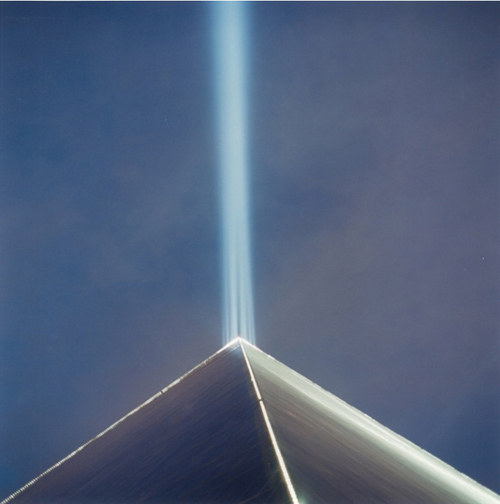
“Untitled” (2011) from the series “Illuminance”. Courtesy of the artist © Rinko Kawauchi
Within her images Kawauchi effortlessly creates a balance between in-focus motifs and open spaces, where both complement each other. “Many people tell me that I leave a lot of empty space, voids in my photographs. That’s not something I do deliberately. Maybe it relates with my generation – a so called vacuous generation – and reflects in my work subconsciously, in a different style from the generations of Nobuyoshi Araki or Daido Moriyamaâ€.
Kawauchi is now working on a new body of work for an upcoming exhibition at the Tokyo Metropolitan Museum of Photography, scheduled for May 2012. In a casual moment with her interviewer, she shares a smiling anecdote: “At the moment, I’m flirting with a different camera, Canon 5D, a digital one. My relationship with the Rolleiflex is pretty solid now and have good faith we’ll stay together no matter what, so that’s my excuse for having an affair with other camerasâ€. Unfulfilled with the Canon 5D, Kawauchi is also fooling around with a large format camera, a phone camera as well as another video device. While she mentions having started a new series of photo essays, she kneels down to catch the nebulous rainbow-like colours, with her camera phone, of a dim line of the light shining through the floor, in a fleeting moment of child-like curiosity.
* “Constant present” was referred by Kawauchi in an interview with David Chandler, a professor of photography at the University of Plymouth and a visiting professor at the University of Brighton, on 16 October 2010.
Text and interview by Miwa Kojima
(Interview was originally in Japanese)
Rinko Kawauchi was born in Shiga, Japan, in 1972. Lives and works in Tokyo. Awarded prestigious 27th Annual Kimura Ihei Award for two puiblications, UTATANE and HANABI, in 2002. Also awarded ICP’s the 25th Infinity Award, Art Category in 2009. Further publications includes AILA (FOIL 2004), the eyes, the ears, and Cui Cui (both FOIL, 2005) and Semear (FOIL, 2007). Major solo exhibitions are: Foundation Cartier pour l’art Contemporain, Paris, 2005; The Photographers’ Gallery, London, 2006; AILA + the eyes, the ears, Hasselblad Centre, Goeborg and Semear at Museu de Arte Moderna de São Paulo, São Paulo, 2007; Cui Cui The Vangi Sculpture Garden Museum, Shizuoka, 2008, Illuminance, Gallery at Hermes, New York , 2011 and murmuration, Rose Gallery, Los Angels, 2011. She also participated in numbers of group shows including Brighton Photo Biennial, 2010 Bye Bye Kitty!!! Between Heaven and Hell at Japan Society NY, 2011 and Le Mois de la Photo a Montreal, 2011.
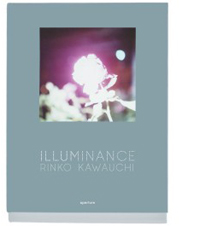
Rinko Kawauchi “Illuminance”
Hardcover: 352 pages
Publisher: Aperture (July 31, 2011)
Essays by David Chandler
Language: English
ISBN-10: 1597111449
ISBN-13: 978-1597111447
